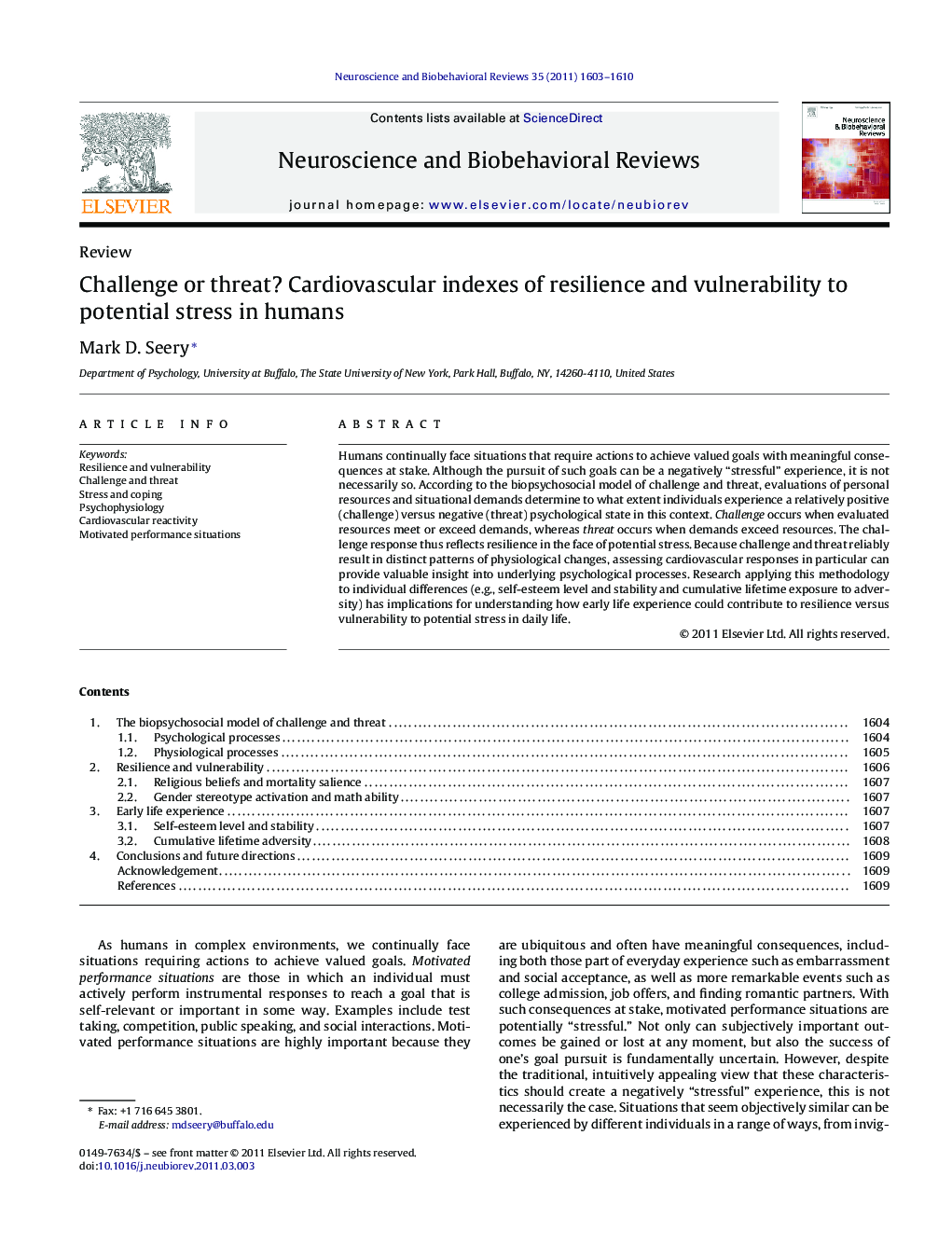| Article ID | Journal | Published Year | Pages | File Type |
|---|---|---|---|---|
| 937582 | Neuroscience & Biobehavioral Reviews | 2011 | 8 Pages |
Humans continually face situations that require actions to achieve valued goals with meaningful consequences at stake. Although the pursuit of such goals can be a negatively “stressful” experience, it is not necessarily so. According to the biopsychosocial model of challenge and threat, evaluations of personal resources and situational demands determine to what extent individuals experience a relatively positive (challenge) versus negative (threat) psychological state in this context. Challenge occurs when evaluated resources meet or exceed demands, whereas threat occurs when demands exceed resources. The challenge response thus reflects resilience in the face of potential stress. Because challenge and threat reliably result in distinct patterns of physiological changes, assessing cardiovascular responses in particular can provide valuable insight into underlying psychological processes. Research applying this methodology to individual differences (e.g., self-esteem level and stability and cumulative lifetime exposure to adversity) has implications for understanding how early life experience could contribute to resilience versus vulnerability to potential stress in daily life.
